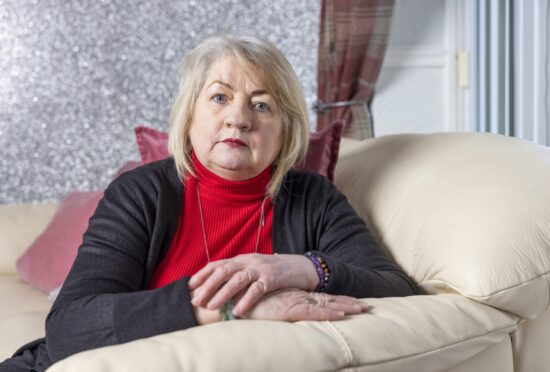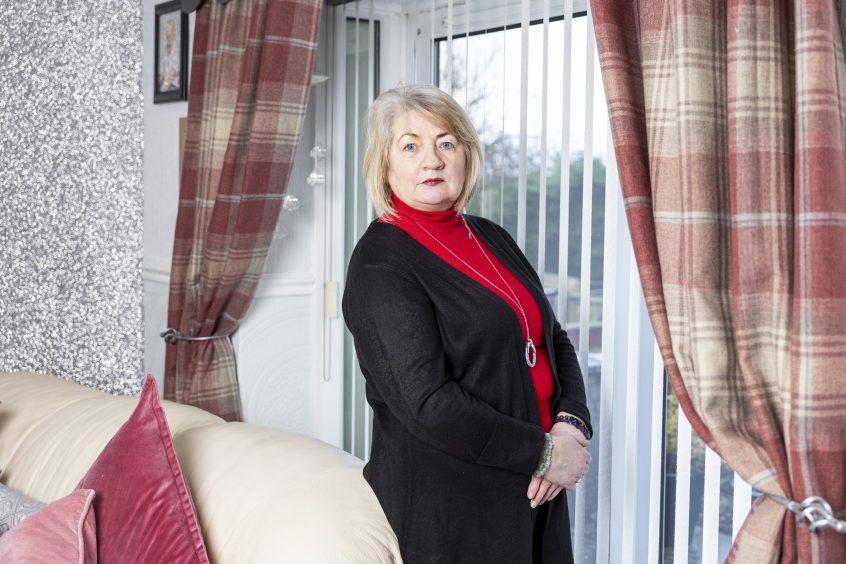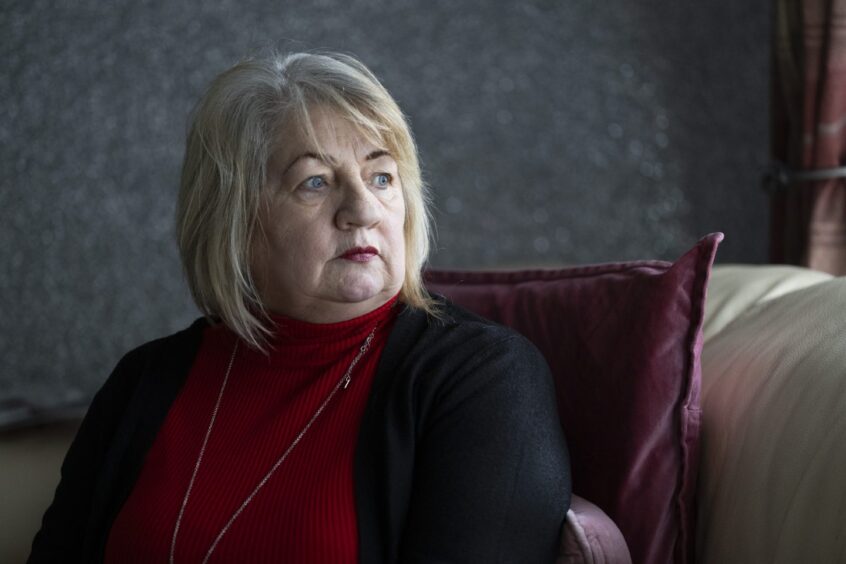
Thousands of women may be unknowingly living with the risk of cervical cancer because of a series of NHS blunders dating back almost 30 years.
Three women are known to have died and at least two more have been diagnosed with the deadly cancer after being wrongly excluded from screening programmes.
The scandal first emerged three years ago when health chiefs contacted 1,500 women. Now they are writing to a further 150,000 women who may have been placed at risk.
The scandal revolves around women given a partial hysterectomy being wrongly excluded from the national cervical screening programme since 1997.
Women who still had a cervix continued to be at risk from the deadly cancer because they were not being tested. After initially saying just over 400 women were affected, in 2021 the Scottish Government wrote to 1,500 who were considered most likely to have been incorrectly excluded.
It has now launched a second audit involving the records of a further 150,000 women who had been permanently excluded from the screening programme – with one new case found so far.
Now leading charity Cancer Research UK has warned the recall programme is taking too long.
Sisters Rachel Cannon, 61, and Lindsay Colman, 56, both from Bathgate in West Lothian, have a family history of cervical cancer and are among those who have received letters in the last few days.
Rachel, who had a hysterectomy more than 10 years ago, said the letter had left her deeply shocked. She admitted: “To suddenly get a letter telling me that I have unknowingly been living with a chance of developing cancer when we have a high family risk of the killer disease shocked me to the core.”
Lindsay was going to throw her letter away but has now made an appointment to get screened.
She said: “I had a hysterectomy 11 years ago and, because of our family history with cervical cancer, I asked the surgical team to remove my cervix. When I received a letter several days ago warning me I had wrongly been excluded from the screening programme, I initially thought I’d just throw the letter in the bin as it wouldn’t apply to me.
“Now I feel physically sick, worrying I was not told the truth 11 years ago and perhaps they left my cervix or any cervical tissue.
“With my mother developing cervical cancer and my aunt dying of it, I don’t want to take the chance that I’m one of the women who has fallen through the net.”
Lindsay added: “If so many blunders have been made during this scandal, do not take the chance that you are in the clear. If you get a letter, go and get screened. It could save your life. All these years I’ve comforted myself thinking I’d had a full cervical removal when I could be at risk because of all the mistakes that were made. It leaves me terrified.
“I won’t rest till I get the test results back, and just pray all will be OK.”
Three major blunders caused the scandal. The NHS admitted three years ago that technical errors surrounding coding of operations meant that women who had a partial hysterectomy where their cervix was retained, were wrongly excluded from screening programmes.
Then it emerged that pathology labs had wrongly presumed samples were from women who no longer had a cervix. In yet another blunder, when correct medical information on partial hysterectomy cases was passed to NHS primary care services, it was wrongly logged as total hysterectomy cases.
Scottish Liberal Democrat leader Alex Cole-Hamilton said: “The government decided to hide errors in the screening programme for months before the 2021 election. They put political victories front and centre, leaving hundreds of women in a state of anxiety and confusion. It must feel terrible to receive a letter warning you of this scandal, only to find out that the government has known for years. The government has clearly not done everything in its power to offer reassurance and ensure women are contacted as swiftly as possible. As a former Health Secretary, Humza Yousaf deserves a share of the blame for not driving this work forward.”
Scottish Labour Deputy Leader Jackie Baillie said: “It is simply shocking that women are still finding out they have been overlooked for cervical cancer screening years after the scandal became public. The women involved have been badly failed. We cannot allow the neglect of women’s health to continue.”
Scottish Conservative deputy health spokeswoman Tess White said: “This scandal dates back to 1997, yet the public have been kept in the dark for years and, as a result, thousands more women have been put at risk.
“Ministers must provide an urgent update on what progress has been made to contact all affected women and ensure they receive the support they need as an utmost priority.”
The Scottish Government insist they have been “transparent” over the process and kept those involved “up to date on progress”. It added: “In 2021, the records of around 1,500 individuals who were thought to have had subtotal hysterectomies and were at the highest risk of being excluded incorrectly were audited – 358 individuals were found to have been incorrectly excluded. All those who required further screening or investigation were contacted.
“A wider audit is being conducted out of an abundance of caution. The number of records and the time period they cover makes the audit an extremely complex process. One further case of cancer has been identified through the audit although the overwhelming majority of exclusions have been found to be correct, and the risk to the minority of women who may require further investigation remains extremely low.
“Whilst individual health boards continue to audit patient records, it is not possible to say at this stage how many women across Scotland have been screened.”
‘Politicians and NHS officials have dithered while women have died. It’s unforgiveable’
Rachel Cannon, 61, from Bathgate, had a hysterectomy around 21 years ago and received a letter telling her she had been incorrectly missed from cervical screening late last month.
She said: “To suddenly get a letter telling me that I have unknowingly been living with a chance of developing cancer when we have a high family risk of the killer disease shocked me to the core.
“Four years ago, we also lost my beloved daughter-in-law to cervical cancer at the age of just 38, so this dreadful disease has already cost my family far too much heartbreak.
“Immediately after reading the warning, I booked a test and now have to wait another 10 agonising weeks to get the results.”
Rachel, who has just become a great grandmother, said she is furious that it is taking years for victims to be notified.
She said: “It is unforgivable for this scandal not to have been given the urgent priority it deserves, particularly since women have developed cancer and died as a result of being wrongly excluded from screening programmes.
“Government minsters have known about this since the beginning of 2021, but it has taken them three full years to contact me, and I am sure I am not the only one as I was told the system has been inundated with women looking to book tests.
“This whole scandal has been mishandled so badly it is unforgivable that politicians and NHS officials have dithered while women have developed cervical cancer and died.”
Screening is key in the prevention of cancer
by Naser Turabi, Cancer Research UK’s director of evidence and implementation
We are deeply concerned to hear that it is taking too long for people who may have been incorrectly excluded from the cervical screening programme in Scotland to be contacted and offered a fast-track screening appointment.
Cervical screening is an effective way of preventing cancer deaths, so the Scottish Government needs to urgently ensure that further unnecessary harm is avoided.
Screening relies on there being an accurate, up-to-date list of those who are eligible, so invitations can be sent to the right person at the right time. It plays a key role in preventing cancer, by picking up signs of early cell changes in the cervix.
If a patient has a total hysterectomy and the cervix is completely removed, cervical screening is not required. But some people have a subtotal hysterectomy where cervical tissue remains and should continue to be invited for cervical screening as usual.
It’s important to remember that screening is for people without symptoms so if you have noticed any symptoms that are unusual for you, such as bleeding between periods or after the menopause or changes in your discharge, get in touch with your GP.
If you’ve been affected get in touch: mascott@sundaypost.com

Enjoy the convenience of having The Sunday Post delivered as a digital ePaper straight to your smartphone, tablet or computer.
Subscribe for only £5.49 a month and enjoy all the benefits of the printed paper as a digital replica.
Subscribe © Jamie Williamson
© Jamie Williamson © Jamie Williamson
© Jamie Williamson